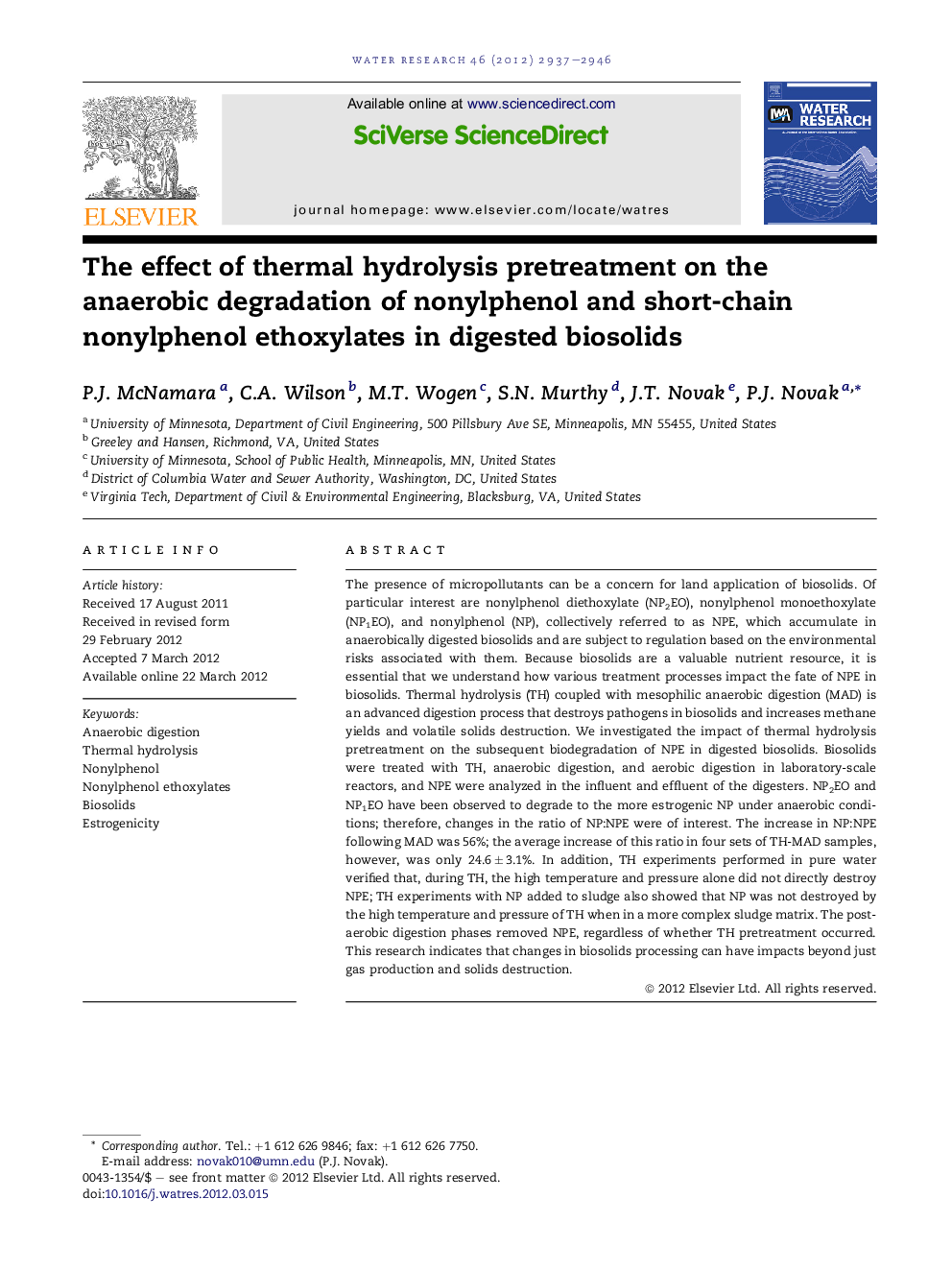| کد مقاله | کد نشریه | سال انتشار | مقاله انگلیسی | نسخه تمام متن |
|---|---|---|---|---|
| 4482785 | 1316869 | 2012 | 10 صفحه PDF | دانلود رایگان |

The presence of micropollutants can be a concern for land application of biosolids. Of particular interest are nonylphenol diethoxylate (NP2EO), nonylphenol monoethoxylate (NP1EO), and nonylphenol (NP), collectively referred to as NPE, which accumulate in anaerobically digested biosolids and are subject to regulation based on the environmental risks associated with them. Because biosolids are a valuable nutrient resource, it is essential that we understand how various treatment processes impact the fate of NPE in biosolids. Thermal hydrolysis (TH) coupled with mesophilic anaerobic digestion (MAD) is an advanced digestion process that destroys pathogens in biosolids and increases methane yields and volatile solids destruction. We investigated the impact of thermal hydrolysis pretreatment on the subsequent biodegradation of NPE in digested biosolids. Biosolids were treated with TH, anaerobic digestion, and aerobic digestion in laboratory-scale reactors, and NPE were analyzed in the influent and effluent of the digesters. NP2EO and NP1EO have been observed to degrade to the more estrogenic NP under anaerobic conditions; therefore, changes in the ratio of NP:NPE were of interest. The increase in NP:NPE following MAD was 56%; the average increase of this ratio in four sets of TH-MAD samples, however, was only 24.6 ± 3.1%. In addition, TH experiments performed in pure water verified that, during TH, the high temperature and pressure alone did not directly destroy NPE; TH experiments with NP added to sludge also showed that NP was not destroyed by the high temperature and pressure of TH when in a more complex sludge matrix. The post-aerobic digestion phases removed NPE, regardless of whether TH pretreatment occurred. This research indicates that changes in biosolids processing can have impacts beyond just gas production and solids destruction.
Figure optionsDownload high-quality image (114 K)Download as PowerPoint slideHighlights
► Thermal hydrolysis (TH) did not degrade nonylphenol in sludge or water.
► TH pretreatment to anaerobic digestion reduced biodegradation of NPEO to NP.
► Aerobic digestion following anaerobic digestion reduced estrogenicity in biosolids.
Journal: Water Research - Volume 46, Issue 9, 1 June 2012, Pages 2937–2946